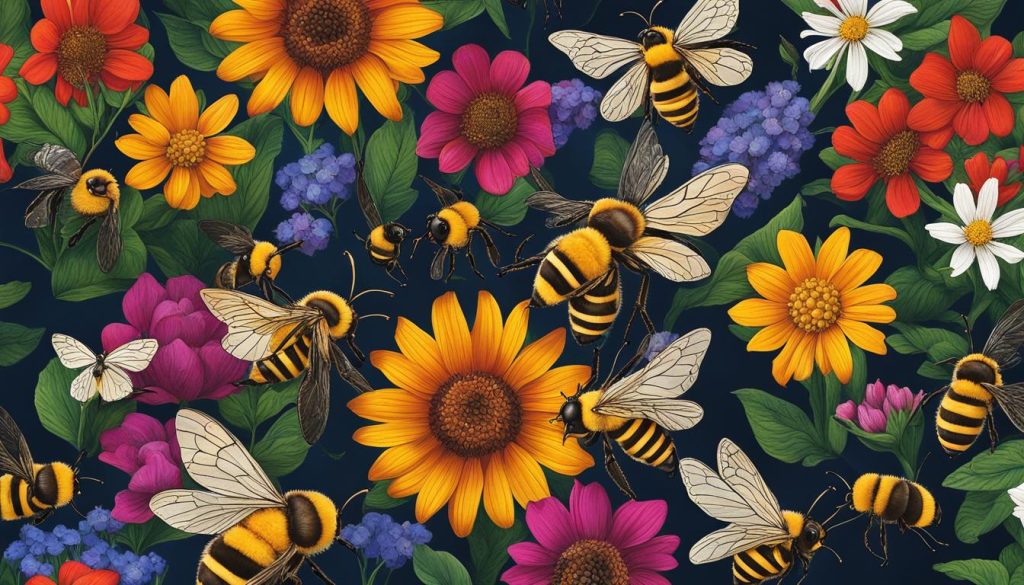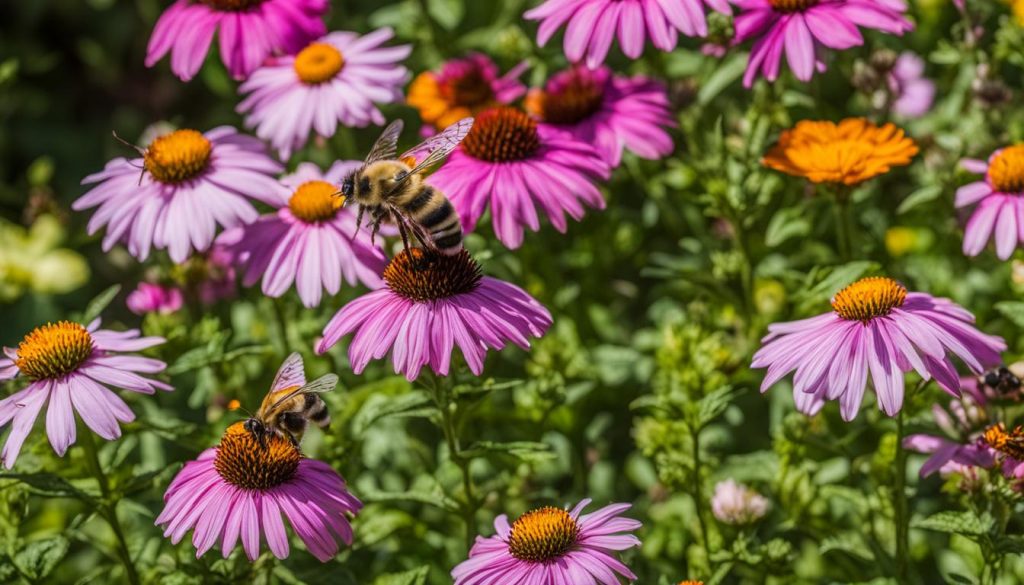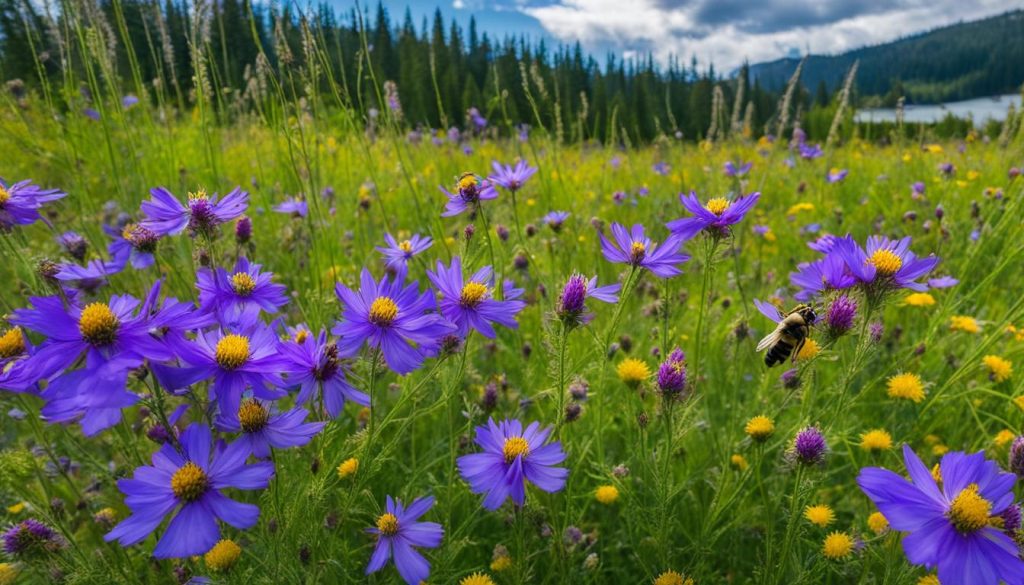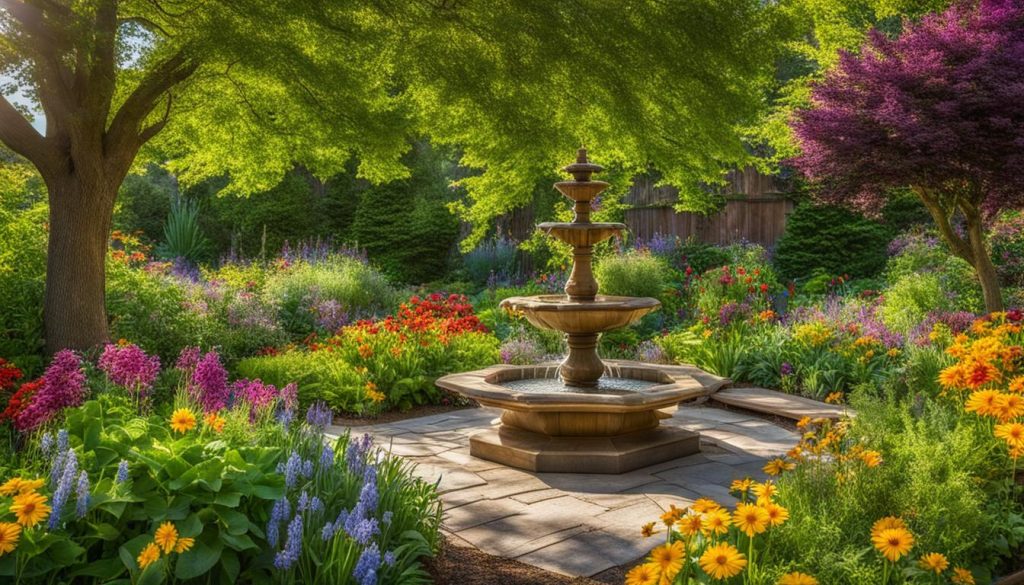Welcome to our guide on creating a pollinator-friendly landscape! As Canadians, we are lucky to be surrounded by an abundance of natural beauty and diverse wildlife. However, as we continue to develop and urbanize, it becomes increasingly crucial to consider our impact on the environment. By implementing pollinator-friendly landscaping practices, we can do our part in supporting the well-being of essential pollinators such as bees and butterflies. Not only does this benefit the ecosystem, but it also creates a beautiful and vibrant outdoor space. So, let’s explore how we can create a haven for pollinators right in our own backyards!
Our focus will be on pollinator-friendly landscaping, which involves designing outdoor spaces that provide suitable habitats and sources of food for bees and butterflies. By implementing techniques such as planting native plants and avoiding harmful pesticides, we can attract and support these vital pollinators. So, let’s dive into the specifics of understanding pollinators and creating a pollinator-friendly garden that will attract bees and butterflies.
Understanding Pollinators: Bees and Butterflies
Before we delve into creating a pollinator-friendly landscape, it’s essential to understand the significance of pollinators, including bees and butterflies. Pollinators play a vital role in our ecosystem, and we rely on them for much of our food production. Bees, in particular, are considered nature’s hardest workers, as they pollinate a vast array of crops, including fruits, vegetables, nuts, and seeds.
Butterflies, too, play their part as pollinators while bringing beauty and color to our gardens. They are essential for pollinating plants like milkweed, which is necessary for the survival of monarch butterflies.

However, the population of bees and butterflies is declining rapidly due to human activities such as urbanization, pesticide use, and habitat loss. Hence, it is crucial to create pollinator-friendly landscapes that provide them with a safe haven to thrive.
Creating a Pollinator-Friendly Garden: Best Practices
Creating a pollinator-friendly garden is a simple and rewarding way to contribute to the well-being of bees and butterflies. By implementing eco-friendly practices and designing a landscape that caters to their needs, we can attract these vital pollinators and provide them with a sanctuary.
Select Native Plants
Choosing native plants is the first and most crucial step in creating a pollinator-friendly garden. Native plants offer a source of nectar and pollen that bees and butterflies have adapted to over time. They are also hardier and more resistant to local pests and diseases. Consider planting native flowering plants, shrubs, and trees such as aster, purple coneflower, and milkweed.
Plant a Variety of Flowers
Planting a variety of flowers in your garden provides a diverse and attractive environment for pollinators. Bees, for example, are attracted to blue, purple, and yellow flowers, while butterflies prefer bright and colorful blooms. Introducing a mix of annuals and perennials will keep your garden blooming throughout the season.
Avoid Pesticides
Pesticides and insecticides can be harmful to bees and butterflies and should be avoided in a pollinator-friendly garden. Instead, opt for natural pest control methods such as companion planting and introducing beneficial insects like ladybugs and lacewings.
Provide Habitat
Creating a habitat for bees and butterflies is essential in attracting and maintaining them in your garden. Providing shelter, such as bee hotels and butterfly houses, can offer refuge from predators and harsh weather conditions. Leaving dead wood and leaf litter can also create a natural habitat for these pollinators.
Use Compost and Mulch
Using compost and mulch in your garden is an eco-friendly way to promote soil fertility and retain moisture. Compost can provide essential nutrients for plants and reduce the need for synthetic fertilizers. Mulch helps to suppress weeds and retain moisture in the soil, keeping your plants healthy and hydrated.
By implementing these best practices, we can create a beautiful and thriving pollinator-friendly garden. Let’s do our part in protecting these vital pollinators and contributing to a healthy and sustainable ecosystem.

Plants That Attract Bees and Butterflies
When it comes to creating a pollinator-friendly garden, plant selection is key. By carefully choosing plants that attract bees and butterflies, you can create a thriving habitat for these important pollinators. Here are some of our top recommendations:
Plants That Attract Bees
- Lavender – Bees are attracted to the vibrant purple blooms and the sweet fragrance of lavender.
- Wild Rose – The beautiful pink flowers of the wild rose provide a source of nectar for bees.
- Sage – The blue flowers of the sage plant are a favorite of bees, and the plant is also drought-tolerant.
- Sunflower – The large, bright flowers of the sunflower provide both nectar and pollen for bees.

Plants That Attract Butterflies
- Milkweed – Milkweed is essential for the life cycle of monarch butterflies, as it is the only plant that their larvae will eat.
- Butterfly Bush – As the name suggests, the butterfly bush is a favorite of butterflies, and its long-lasting blooms provide nectar throughout the summer months.
- Purple Coneflower – The daisy-like flowers of the purple coneflower are a favorite of both butterflies and bees, and it is easy to grow in a variety of soil types.
- Goldenrod – Despite its reputation as a cause of hay fever, goldenrod is a great source of nectar for late-season butterflies.
By incorporating a variety of these plants into your garden, you can create a beautiful and functional pollinator habitat that will bring the beauty of bees and butterflies right to your doorstep.
Maintaining Your Pollinator-Friendly Landscape
Creating a pollinator-friendly landscape is just the first step towards attracting bees and butterflies to your garden. Maintaining the garden is equally important to ensure a healthy habitat for these pollinators. Let’s take a look at some essential maintenance tasks.
Watering
Proper watering techniques are crucial for maintaining a healthy pollinator garden. It’s important to water your plants deeply but infrequently to encourage root growth. Avoid overhead watering as it can damage the delicate wings of butterflies and bees. Instead, use a drip irrigation system or a watering can to water at the base of each plant.
Mulching
Mulching is an effective way to retain moisture in the soil and prevent weed growth. However, when choosing mulch, it’s important to avoid using dyed or treated mulches, as they can be harmful to pollinators. Instead, use organic mulches such as shredded leaves, grass clippings, or compost.
Pruning
Proper pruning techniques are essential to maintain the health and beauty of your garden. However, it’s important to avoid pruning your plants during their blooming period, as this will remove the nectar and pollen sources for bees and butterflies. Instead, prune your plants after their blooming period and remove any diseased or dead branches.
Continuous Care and Monitoring
Regular monitoring of your pollinator garden is essential to ensure the health and wellbeing of your plants and pollinators. Keep an eye out for any signs of pests or disease and address them promptly. Additionally, continue to add new plants and maintain a diverse and vibrant landscape for your pollinator friends.
By following these maintenance practices, you can ensure a thriving pollinator garden that is not only beautiful but also supports the essential work of bees and butterflies in our ecosystem.
Landscaping Vaughan is at your service for all your landscaping requirements! Don’t hesitate to reach out to us for any of your landscaping needs. Our dedicated team is ready to assist you in creating and maintaining a stunning outdoor space. Whether you’re looking for design ideas, lawn maintenance, or hardscaping solutions, we’ve got you covered. Contact us today, and let’s transform your outdoor environment into a beautiful and functional masterpiece!

